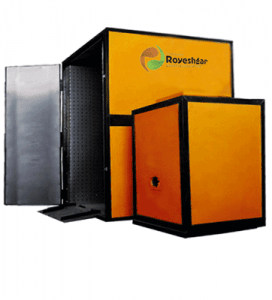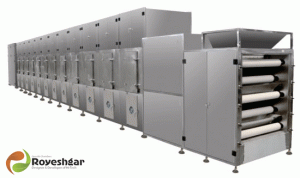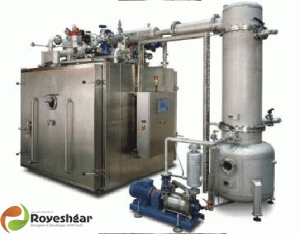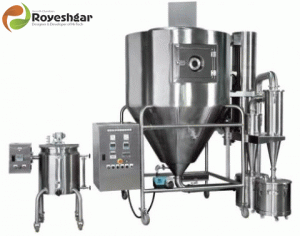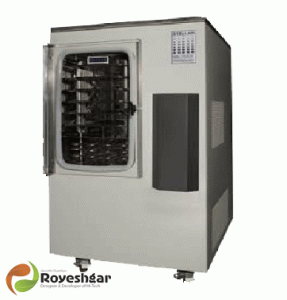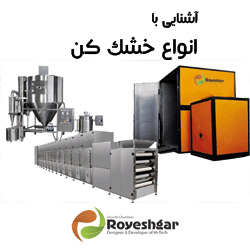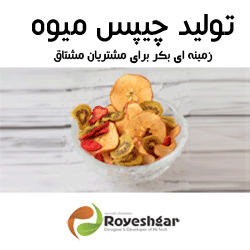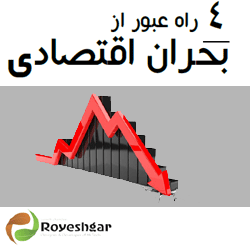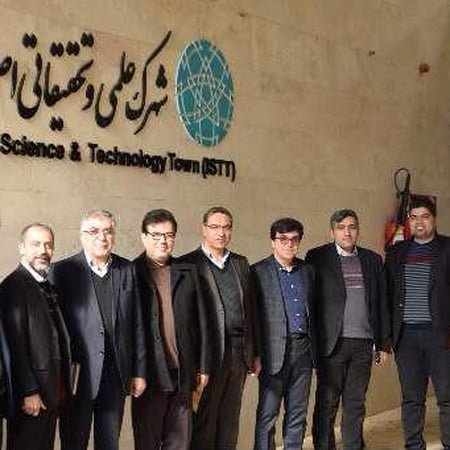
Visit of the Head of the University Jihad
February 2, 2019
Visit by the head of the Agricultural Research, Education and Extension Organization
June 10, 2019
Visit of the Head of the University Jihad
February 2, 2019
Visit by the head of the Agricultural Research, Education and Extension Organization
June 10, 2019Learn about different types of dryers
To choose the best type of dryer for drying your product, you should first learn about different types of dryer models. In this section we try to help you choose the dryer model and it is best to start your research after choosing the best dryer manufacturer.
History of fruit and vegetable drying
Food drying has been the most common way of extending food life since the 10th century BC in the Middle East and Asia. By drying, the water is removed from the food, which prevents the growth of bacteria, yeast and mold.
In the past it was possible to dry by evaporation of water in the material. Traditional methods of drying food based on water evaporation can be described as drying in the open air, drying in the sun, drying in the wind, and smoking. Despite of being economical , the methods were exposed to air pollution, dust, and insects , because of placing in outdoor , which causes severe loss of quality in these products. But in the modern world, such factors are manageable, and the most important disadvantage of traditional methods is the time-consuming process. Time was very important for people looking to make money. Thus man began to dry food by artificial methods and machines.
Traditional methods of drying food are very widespread where people choose the method based on their financial strength, quality and product type and raw material. In this article you will learn various methods of drying food artificially.
Dryer models
To choose the best type of dryer for your product, you should first get to know different types of dryer models. In this section we try to help you with choosing of dryer model and it is better to start your research about choosing the best supplier after choosing the model.
Solar dryer
It is the closest to traditional methods except that the space is completely closed and the temperature and humidity are fully controlled. In this method, the food is placed in a chamber that has walls and ceilings made of glass and dried using sunlight. The chamber has an air circulation system for moisture outflow and temperature sensors.
In this method the production volume and production time are very limited. Because of the time-consuming process, it is completely non-commercial as traditional methods, and the food is limited to fruits and vegetables. The quality of the products is average and in some cases low. This method is completely clean due to the use of thermal energy of the sun and is considered a green one. You can even provide this on your roof at the lowest cost.
Cabinet dryer
The simplest, most economical and affordable way to dry food is to use a cabinet dryer. Cabinet dryers are used by the operator or farmers or for domestic business operations due to their simple mechanism and ease of use for the operator to dry more fruits and vegetables. In this method, the food is placed on metal or plastic trays and enclosed in a cube chamber.
Air that is heated by a burner or element flows directly or sometimes indirectly into the cabin and evaporates the water trapped in the gates. The range of use of this type of dryer is very wide and ranges from several tens of kilograms of material to several tons, such that the dryer of this type is available for domestic use to industrial production. The drying time of this machine is much shorter than traditional methods and is completely dependent on the moisture content of the material; this varies from a few hours to 20 hours for different materials.
Product quality in this machine is completely dependent on the raw material and the direct or indirect heating method. So, if the material is of high quality and the heating systematic and indirect , the product has higher quality. Depending on the climate and geographical and geographical conditions, the device uses electricity, gas or diesel to provide energy to warm the air. Due to variations in model and manufacturer, it is possible to compare and reasonably purchase this type of dryer.
Tunnel dryer
Tunnel dryer is a fully commercial machine used in factories not only for drying food but also for medical, chemical and mineral industries. Production capacity in this machine starts from 1 ton and there are machines with a capacity of several tens of tones.
The mechanism in a tunnel dryer is that the material enters the hot air tunnel from one side onto the multi-storey tracks and exits the other side.These tunnels sometimes reach 25 meters in length, with a drying time of between 5 and 15 hours depending on the material. There are several heating stations in the tunnels that make the product gets a uniform heat.
Its benefits include constant and permanent production, precise control of temperature-time and temperature-humidity charts. The source of heat supply is in electricity, gas or diesel heating stations. One of the new methods of water evaporation in this dryer is the usage of microwave waves. This method of energy supply is faster than other methods. The evaporation in this method is based on increasing the kinetic energy of the water molecules and requires no heat source such as a heater or burner.
continuous dryer
It looks like a tunnel dryer but looks slightly different in mechanism. The difference is in how the raw material moves, with the material moving continuously down from the top of the hot air chamber, and if the material is dried it gets out of the cycle , otherwise the process will continue. . It is often used to dry tea.
Vacuum dryer
These types of dryers have a sophisticated process for drying materials and are mostly used for drying materials that are heat sensitive. The reason for this is the mechanism of this device. The first product in the container is placed in a vacuum and temperature, low pressure and high pressure is heated by hot air. Time and temperature in this machine is lower than other methods and the product is of higher quality. In addition to drying food, this type of dryer is used to dry all heat-sensitive materials..
Puffy dryer
Puffy dryer is a relatively new method used for products that require high porosity and high water reabsorption rate. The quality of the products is very high but covers a small production volume. In this dryer, small pieces of raw material are first subjected to a high temperature and pressure for a short time and then returned to atmospheric pressure. This is due to the sophisticated mechanism of the new technology and the almost non-economical and laboratory approach used in laboratories and research to develop technology or study specific materials.
Fluidized bed dryer
A very new mechanism whereby particles of matter are suspended in hot air to dry completely. The particles are completely suspended by fluidization in the hot air stream, which dries out all surfaces of the particulate material evenly. The main limiting factor of this process is the particle size because the particle size must be as small as possible to allow it to be suspended with less air.
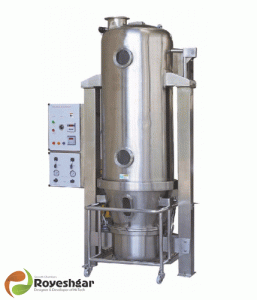
A spray dryer is a type of fluidized bed in which the liquid is sprayed into the chamber of hot air in the dryer. In contact with hot air, water or any other liquid evaporates and the solid mass exits with the air from the chamber. Finally, the dried matter’s particulate is removed from the chamber with air and packaged by a filter. This method is mostly used to dry liquid foods such as milk. This machine is completely commercial and economical and is used to produce high volume and very high volume in factories.
Freeze Dryer
In freeze dryer, by lowering the temperature of the crop, most of its moisture becomes ice and then sublimated by lowering the ambient pressure. The freeze dryer process can be used for many foods, especially products whose quality is important to the consumer.
During freeze drying, heat and mass transfer processes are optimally performed. Depending on the shape of the drying system, heat transfer is carried out through the frozen or dried layer of the product. Obviously, the heat transfer through the frozen layer is fast, so it will not limit the drying speed.
The rate of heat transfer through the dry layer is slow because the thermal conductivity of fully porous buildings is low under vacuum conditions. In both cases, mass transfer is done in the dry layer of the product. Since the molecular permeation rate in the vacuum is slow, it is expected that the water vapor permeation rate will be the limiting factor for the drying rate.
One of the benefits of freezing drying process is the high quality of the product produced due to the low temperature during sublimation and preservation of the product structure. These advantages are balanced against energy consumption for freezing and vacuum generation and justify the process. By lowering the temperature of the product, most of its moisture is converted to ice and then sublimated by reducing ambient pressure.
Deep bed dryer
Deep bed dryers, also known as fixed bed dryers, are one of the most common types of agricultural dryers, designed for heterogeneous drying of grain in a deep layer (more than 20 cm deep) where drying is faster at the inlet end of the dryer than that at the exhaust end Deep bed dryer consist of silo or bin (rectangular warehouses) fitted with ducting or false floors through which air is forced. Depth up to 3.5 m of grains may be dried at one time
Drying begins at the inlet end and progresses through the entire bed. It is found that the lower zone dries rapidly. Air moves from the lower to the upper zone and increases its moisture content and cools due to evaporation. Thus a gradient of temperature and relative humidity is formed between the lower and the upper zone, which is a measure of the drying rate. Final moisture content is the mean moisture of these zones .
Deep bed drying is a complicated process involving simultaneous heat and mass transfer phenomena, which depend on various factors such as temperature, velocity, relative humidity and pressure of the air, physical nature, initial moisture content of the drying material and the bed depth.By adjusting these parameters, a moderate drying operation can be achieved without over-drying in the lower zone.
what should be done???
Here are some of the main methods of drying. But the choice is always with the operator. In order for you to choose the best and most efficient way to make a reasonable and economical purchase, you must first determine which question you want to answer with your product:
Are you looking for the best quality product ???
Looking for an economical product?
Are you just looking for a product to sell ???
Are you just looking for instant income?
Looking for produce and publish your brand name ???
Then complete your information about manufacturers and devices available in the market.
Along with the quality of the device, consider things like access to spare parts and repairs, after-sales service quality and brand reputation. Finally, be sure to consult with other manufacturers and users and decide to buy and equip.


